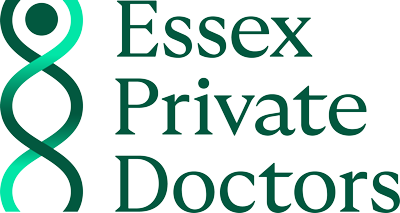PSA alone is no longer sufficient. Here’s what men over 45 really need to know about – the Stockholm3 test – a blood test for the early detection of prostate cancer.
When it comes to prostate cancer screening, you’ve likely heard of the PSA test, which is a blood test. Maybe your GP has already checked yours. It’s been the go-to tool for years.
But here’s the rub: PSA testing has its issues.
It can miss dangerous cancers entirely. Or it can pick up slow-growing ones that were never going to cause you harm in the first place. That means a lot of unnecessary stress, MRIs, a prostate biopsy—and sometimes even unnecessary treatments.
That’s where the Stockholm 3 test comes in. It’s a serious upgrade—a smarter, far more accurate way to understand your real risk of prostate cancer. Early detection of prostate cancer is key, and if you’re a man over 45, especially with a borderline PSA or a family history of prostate cancer, this is the blood test you’ve been waiting for.
What is the Stockholm3 test?
The Stockholm3 test (sometimes written as STHLM3) is a cutting-edge blood test developed in Sweden. It offers a much more accurate way of assessing whether someone is at risk of aggressive prostate cancer. It’s based on a combination of biomarkers, genetics, and clinical risk factors.
It doesn’t just give you a “high” or “low” PSA level. It uses complex algorithms to generate a personalised risk score that can help us determine whether you actually need further testing—like an MRI or biopsy.
The test looks at:
- Five key blood-based protein biomarkers:
- Total PSA
- Free PSA
- Human kallikrein 2 (hK2)
- MSMB (microseminoprotein-beta)
- MIC-1 (macrophage inhibitory cytokine 1)
- A genetic risk profile based on more than 100 SNPs (single nucleotide polymorphisms) known to be associated with prostate cancer
- Your clinical risk profile, including:
- Age
- Family history of prostate cancer
- Previous prostate biopsy results (if applicable)
All this data is processed together to give a score that tells us your risk of having a clinically significant prostate cancer (usually defined as a Gleason score ≥ 7), and helps us decide on prostate cancer diagnostics. It can also help us to avoid going down the route of unnecessary prostate biopsies.

Prostate Cancer Biopsy
Why isn’t PSA enough anymore?
- The PSA test has a number of weaknesses- it can be elevated because of:
Benign prostatic hyperplasia (BPH)
Inflammation
Recent ejaculation, cycling or exercise
A digital rectal exam or catheterisation - Some aggressive prostate cancers don’t cause a raised PSA, especially early on
- PSA can flag slow-growing cancers that would never cause harm, leading to overdiagnosis and unnecessary treatments
Putting it another way, between 30-50% of all aggressive cases of prostate cancer are missed by using PSA alone, while 70-80% of men with a raised PSA either do not have cancer or have a form of prostate cancer that is not aggressive and does not require treatment.
Who is the Stockholm 3 testing for?
It’s designed for men aged 45 to 74 who want a clearer understanding of their prostate cancer risk. It’s particularly useful for:
- Men with a PSA of above 1.5 ng/ml
- Men with a family history of prostate cancer
- Men who’ve not had prostate cancer in the past but still have an elevated PSA
- Anyone who wants to avoid unnecessary procedures and uncertainty
We often use Stockholm 3 as part of and ‘added extra’ in our Well Man health checks, especially if you’re concerned about cancer, genetics, or simply want a more precise answer than the NHS currently provides.
How accurate is the Stockholm3 test?
Very. In large studies involving over 90,000 men, Stockholm3:
- Reduced unnecessary biopsies by 50%
- Detected more high-risk cancers than PSA alone
- Had an AUC (Area Under the Curve) of 0.76, compared to 0.60 for PSA
That means it gives a much clearer signal as to who is genuinely at risk.
It’s also been validated in multiple European countries and across different ethnic groups. In fact, it’s been approved for clinical use in Sweden, Norway, Germany, Switzerland and Denmark, and it’s already used in parts of the UK’s private sector.
What does the Stockholm3 test result tell you?
The Stockholm 3 test gives you a personalised risk percentage for aggressive prostate cancer. Here’s how we interpret the result:
- Low Risk (0-3): We usually advise watchful waiting and a repeat test again in 6 years
- Normal Risk (4-10): We’ll likely recommend to test again in 2 years.
- High Risk (>11 ): We’ll usually advise a referral to a Urologist for consideration of an MRI and possibly a targeted biopsy.
Every case is individual—we’ll always walk you through what your score means and help you decide what to do next.
What happens during the Stockholm3 test?
The test itself is really simple blood test:
- You come in for a quick consultation and blood draw (we’ll take two 4ml blood samples)
- You fill out a short questionnaire about your medical history
- We send your blood to a central Stockholm3 lab for analysis
- We’ll get the results back in around 14 days
There’s no need for a digital rectal exam just to take the test, and no obligation to do anything further unless your results warrant it.
Is this test better than having an MRI?
The Stockholm 3 test doesn’t replace an MRI. But it can help decide whether you actually need one. A study demonstrated that using Stockholm3 instead of testing for traditional prostate-specific antigen (PSA) increased the detection of clinically significant cancers by 31%, without increasing the need for MRI.
Current prostate cancer testing means many men end up having an MRI simply because of a slightly raised PSA—even if they don’t actually have aggressive prostate cancer. That’s a lot of unnecessary imaging, waiting, and worrying.
By giving us a more accurate risk score, Stockholm 3 helps us avoid sending men for MRI scans they don’t need—and makes sure we don’t miss the ones who do need one.
In fact, studies show that Stockholm 3 – can reduce the number of MRIs by 30–40% while still improving cancer detection.

How is Stockholm 3 different from other prostate tests?
Other tests like the 4Kscore, PHI (Prostate Health Index), and PCA3 are useful—but they each have limitations:
- The 4Kscore only uses kallikrein proteins and doesn’t include genetic data
- The PHI focuses on PSA isoforms but lacks the breadth of biomarkers
- The PCA3 is a urine test that only works after a rectal exam, and has lower accuracy in some men
Stockholm 3 is the only test that combines all three approaches:
- Blood-based biomarkers
- Genetic profiling
- Clinical context
It’s a full-picture view—and that’s why it’s often considered the gold standard in precision prostate screening.
Are there any limitations?
Yes. While Stockholm 3 is powerful, no test is perfect. Here’s what you should know:
- It’s not currently available on the NHS
- It’s best used in men aged 45 to 74 with a PSA between 1.5–10
- It doesn’t completely eliminate the need for MRI or biopsy in high-risk individuals
- The genetic component is still being validated across broader ethnic groups
That said, ongoing trials (including in the UK and the US) are continuing to validate and expand its use.
Is the Stockholm 3 test suitable for men of colour?
Another excellent question. Prostate cancer is more common—and often more aggressive—in men of African and Caribbean descent. That means screening needs to be particularly sensitive.
Stockholm 3 has shown promising accuracy across diverse populations, but it’s true that some ethnic groups were underrepresented in the original Swedish cohort. However, follow-up studies (like the SEPTA and BARCODE-1 trials) are working to validate and optimise the test for broader populations, including:
- Black British men
- South Asian men
- Hispanic and East Asian populations
So yes, it can still be very helpful—but we’ll always factor in your individual background and family history when interpreting your results.
How much does the Stockholm3 test cost?
The Stockholm 3 test is available privately through Essex Private Doctors. See our list of fees here.
The process starts with a consultation with one of our GPs, or can be an ‘added extra’, as part of a Well Man Health Check, which includes a wider range of blood tests, physical checks, and risk assessments for conditions like heart disease, diabetes, and more.
Final thoughts: Why this test matters
If you’ve ever felt confused by your PSA results… worried about prostate cancer… or simply want to avoid unnecessary tests and treatments, the Stockholm 3 test is a modern, science-backed way to get clarity.
It’s fast. It’s accurate. And it’s personalised to you.
Whether you want peace of mind, or a smarter next step if something’s not quite right—we’re here to help you understand what’s happening and what to do about it.






